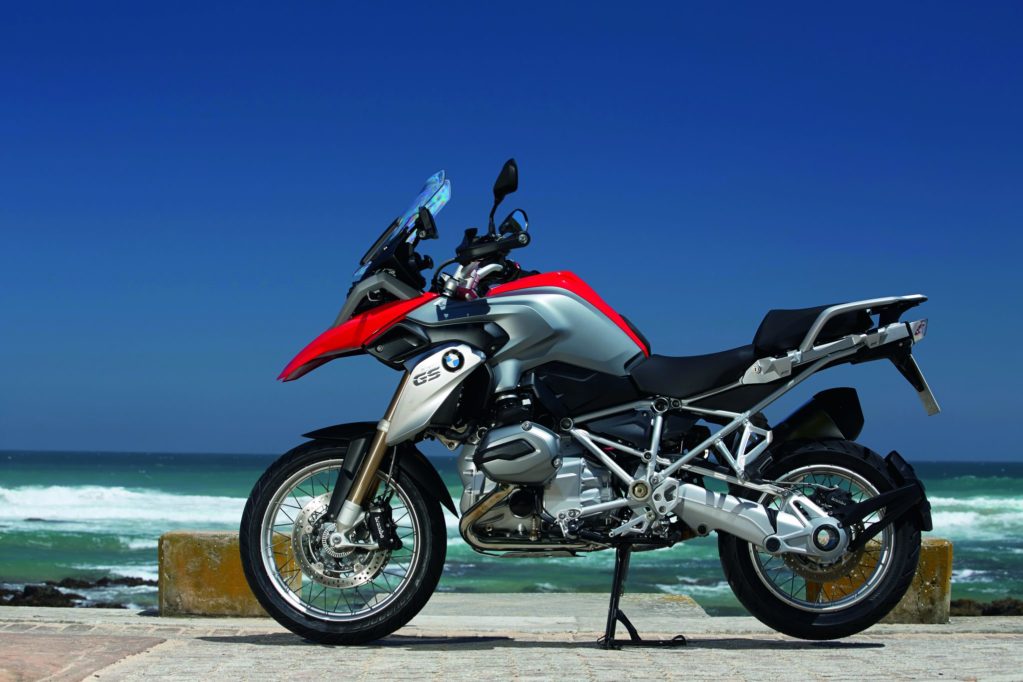Outdoor activities have always been a rich part of the South African way of life. This year’s annual Association of Motorcycle Importers and Distributors (AMiD) lifestyle show in Johannesburg, South Africa, offered a feast for two- and four-wheeled enthusiasts, as well as those who prefer the water.
According to Gauteng Transport MEC, Ismail Vadi, motorcycles are helping to ease traffic congestion. He says government has instituted a 25-year integrated transport plan to address projected increases in population and the subsequent traffic congestion.
“If we do nothing about it, we are looking at a gridlock situation here. The system is going to choke over time. We are seriously looking at other possibilities from a planning point of view. Rail is of course the most important but thereafter we are looking at cycling and motorcycling. From a traffic point of view, motorcycling is clearly an important option for us,” he says.
This is borne out by a study conducted in Belgium, which found that a 20% shift from car to motorcycle commuting would result in a 40% decrease in congestion.
A first for the AMiD show was the announcement of the winner of the inaugural Pirelli South African Bike of the Year award. Sixteen motorcycles were pitted against one another for the title.
Loading...
Making up the entourage of contesting two-wheelers were the Triumph Trophy SE, Triumph Daytona 675R, BMW 1200GS (liquid cooled), KTM 1190 Adventure, MV Agusta Brutale 800, Kawasaki Z800, Aprilia Caponard 1200, Moto Guzzi California 1400, Suzuki Inazuma 250, Honda Integra DCT, Honda NC700 DCT, Yamaha FJR 1300, Yamaha XJ6 Diversion, Victory Boardwalk, Hyosung 650GT and Benelli 600.
The bikes were tested over two days–day one, at the Midvaal raceway and day two on the open road, along a 100km loop from the Vaal Dam to the Magaliesburg.
Thirteen South African motorcycling journalists, along with some professional riders, put the bikes through their paces. The contenders to the throne were apparent from the beginning: the BMW GS 1200 and the KTM Adventure. The outcome was uncertain until the last vote was cast, but the winner was the Bavarian mean machine.
The 2013 GS 1200 has improved on an already class dominating formula with some innovative additions. First among these is a water-cooled Boxer engine, which results in a high level of heat absorption and dissipation. Not that it does away with air-cooling altogether; the liquid cooling, however, is specific to those parts of the engine that are exposed to thermal stress.
The GS also makes use of a wet clutch with anti-hopping functionality, as opposed to the dry clutch of the previous incarnation. A secondary drive now runs through the cardan shaft on the left-hand side of the motorbike.
For the first time ever, an electromotive throttle actuator has been introduced to a GS model. Rider inputs are picked up by a sensor in the accelerator twist grip and sent to the engine management system and the throttle valves are electronically regulated. This translates into greater control and predictable responses. Five riding modes allow both rider and bike to respond to changing road conditions for greater comfort and safety.
These modes work best when combined with the optional Automatic Stability Control, which communicates with the standard ABS braking and (optional) semi-active ESA (Electronic Suspension Adjustment). This Dynamic ESA monitors the vertical travel of the front and rear wheels and adapts the damping accordingly, while also taking into account riding conditions and the maneuvers being carried out.
The GS 1200 has also been fitted with a new tubular steel bridge frame with a bolt-on rear frame. Riding stability and steering precision has been markedly increased thanks to a recently designed Telelever (front) and Paralever (rear) suspension. Stopping power on the BMW comes in the form of revised Brembo Monobloc calipers and ABS.
The two-wheeled offerings weren’t the only show stoppers at AMiD. Using the expo as a launchpad was Vanderbijlpark-based Broderick Marine. Their Cobalt R5 was produced in response to the demand for a mid-sized boat, 24-foot, that nonetheless could offer smoothness, aggression and the extravagances of a swim platform and sun pad. The elegance of the Cobalt R5 speaks of the attention to detail the manufacturers have tried to embody: a console door finished in wood grain and a helm adorned with oil-rubbed ebony Makasser. Aluminium dash panels, stainless steel switchgears and a sound system courtesy of audiophiles Rockford Fosgate ensure that whiling away the hours on this vessel becomes an envious pastime.
If sport is more your game, but you don’t want to settle for the mediocre, then the Response TXi and Wakesetter 23 LSV from Malibu Boats is the perfect tool for the job. Boating International imported only two of these special-edition crafts into the country, which were created as 30th anniversary benchmarks.
“We’ve pulled out all the stops for these models, with the addition of pearl metal flake and special touches throughout that bring style to our celebration of Malibu,” says Malibu CEO Jack Springer.
The boat show at AMiD was also host to the South African Maritime Safety Association (SAMSA), which hoped to educate.
“Our organization is responsible for the issuing of skippers licenses in South Africa. Many people aren’t aware that anyone operating a boat on South African waters is required to be in possession of a skipper’s license,” says Marketing and Communications Officer Tebogo Ramatjie.
Loading...
